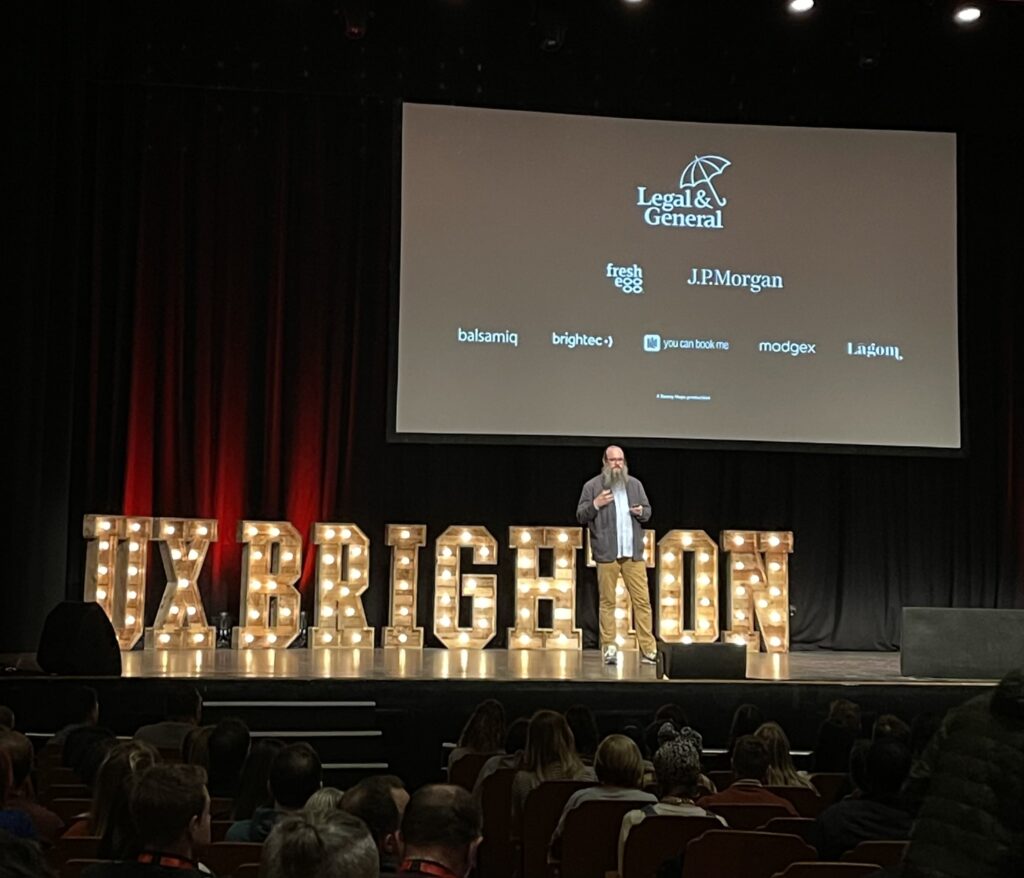Last week I attended the UX Brighton conference for the first time. It was the perfect opportunity to meet the design community in Brighton, and being at the Brighton Dome made the event even more special.
The overall message of the conference was loud and clear. The design industry has evolved in the past years, and as designers, we participate more often in the decision-making process. But how can we ensure our contribution is as effective as we want it to be?
Two main themes resonated with me, so here are my thoughts.

Working together
UX designers depend on product and tech to achieve goals as much as the other disciplines need us. Whatever your company tries to achieve, this being finding product-market fit as a startup or winnings over the competition as a huge corporation, one person can’t do it, not even one department.
Working together is key to success, but we know it can be challenging. As Kate Flood says in her talk, one of the most critical parts of working together is having a shared language. So what can we do as designers? We have mastered the art of visualisation for years, and we can use this to bring understanding and create that shared language that is very much needed.
What if the business doesn’t hear us? Sometimes, this happens even when we show them what is best. For example, how often have you asked yourself, how can I get my product manager to look at my research data? Matt LeMay clearly states that we won’t get anyone to do anything! Product managers or developers feel the same way about designers. They want us to do things for them! He recommends stopping trying to get people to do something and instead focusing the conversations on shared goals. For example, instead of getting my product manager to listen to me about research, I should think about how I can help my product manager achieve the goal we have identified.
The conversation about shared goals should help bring different colleagues on the same level and allow the entire team to work towards the same North Star. We know that’s challenging, and Lucy Spence provides straightforward tips on how to have conversations about trade-offs that enable teams to reach goals. Her example about businesses making huge trade-offs and not openly sharing them with the rest of the company stuck in my mind. For instance, businesses can sacrifice quality to reach the market quickly or speed to get to the market when the company is ready. Are we talking about this? If not, we should have this conversation to align teams.
Slowing down to go faster
The business world is about results, measuring velocity and achieving milestones. Designers shared the same goal: there’s nothing better than creating a product that millions of people use. We can accomplish this by throwing a product into the world and hoping it works, or we can do it differently.
Janna Banstow articulates well the pain of designers when the salesperson asks them to create whatever they heard from a potential client. We are always just a feature away from closing a deal with a customer, aren’t we? Building features on request for clients, defined as the agency model, is manageable, especially if it helps businesses move forward. However, it’s difficult to see a company disrupting an industry with a reactive attitude like this. Janna suggests changing the agency model defined as a trap, especially if this takes teams away from creating value for products. Alternatively, if the agency model provides the necessary revenue, other teams can work alongside the agency model and create value for the product.
This way of working ensures that teams work on what matters, usually identified as part of a well-crafted discovery. However, this is more challenging to achieve, especially when businesses are interested in speed and quick return on investment. It takes longer to run discovery when compared to just pushing something to the market. I liked Jonty Sharples’ analysis of how companies operate permeates into every team. He compared it with their CEOs’ attitudes and showed a correlation between Mark Zuckerberg’s arrogance and a culture that pushes for trying things out and seeing what sticks. Jonty advocates for a business culture based on confidence that can only be obtained through research and discovery.
